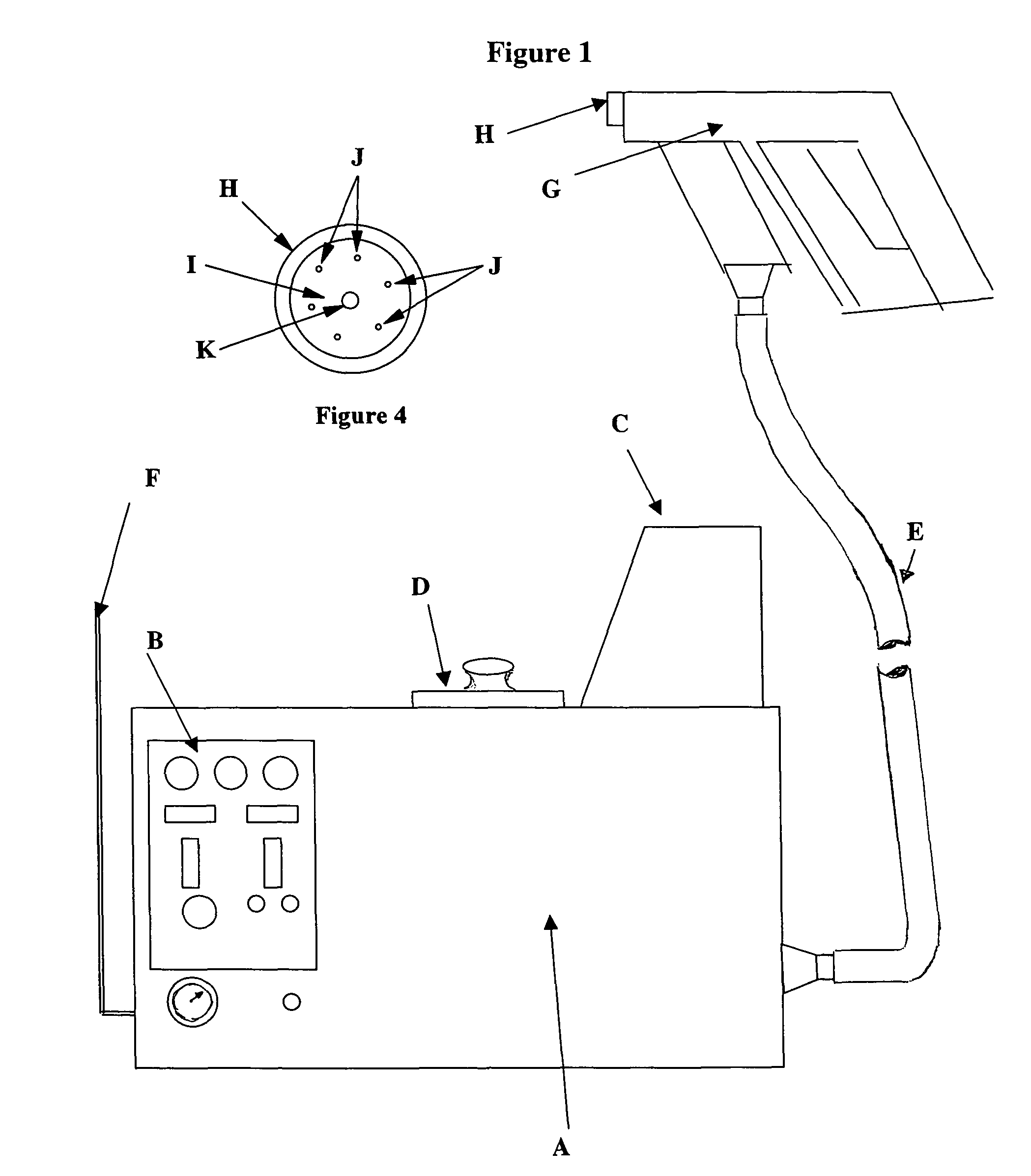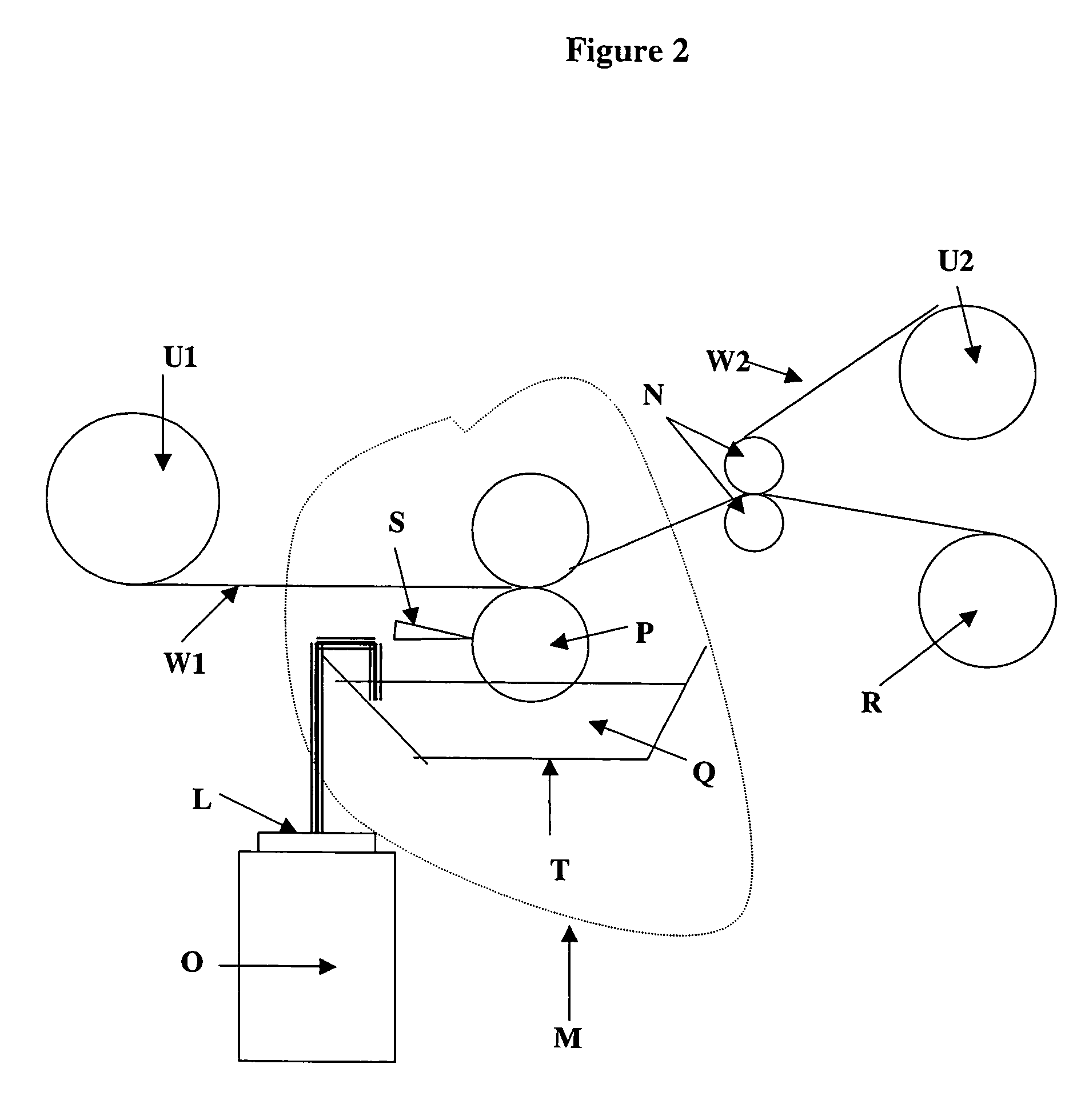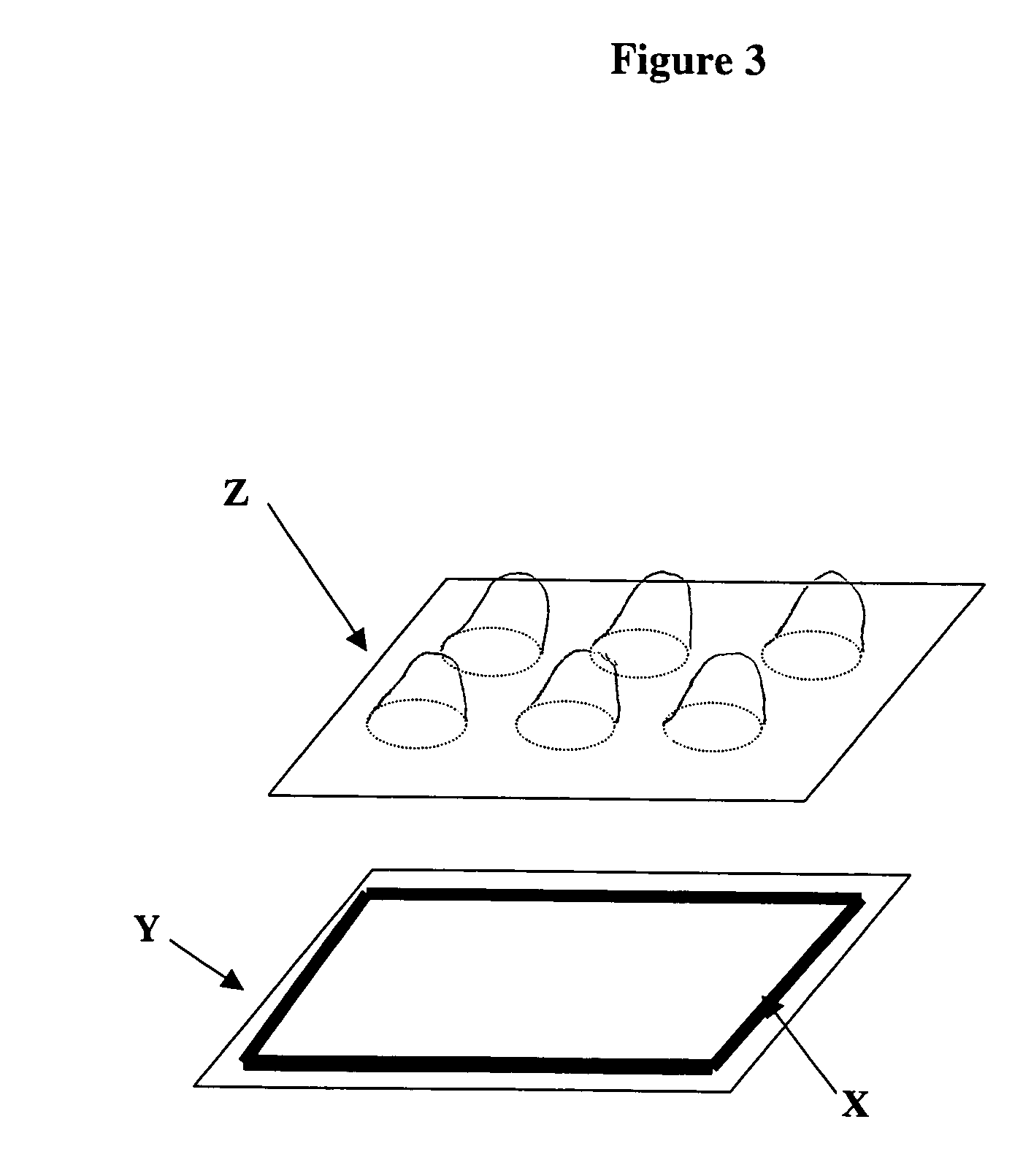Polyolefin based hot melt adhesive having improved heat resistance
a technology of polyolefin and hot melt adhesive, which is applied in the direction of adhesives, layered products, etc., can solve the problems of short pot life, high cost, and unsuitability of hot melts based on polyesters, polyamides and polyurethanes, and achieves environmental durability, good adhesion to polyolefins, and high temperature resistance
- Summary
- Abstract
- Description
- Claims
- Application Information
AI Technical Summary
Benefits of technology
Problems solved by technology
Method used
Image
Examples
examples 1-3
[0146]Hot melt adhesive examples of 1-3 shown in Table 1 were prepared with the ingredients and mixing procedures described herein above. Sample 1 contains both SPP and mRCP, whereas Samples 2 and 3 are based on SPP alone. A total of 250 grams each were made and the mixing was carried out at 350-375° F. under carbon dioxide atmosphere in a laboratory type of mixer what consists of a propeller powered by a motor, a heating mantle, a temperature control unit and a container of about 1 pint in size. The appropriate amounts of each component, calculated according to the ratios shown in the table, except the SSC polymers, were added to the container. The temperature of the container was then raised to melt the content. After the ingredients in the container were completely melted, the motor was turned on to start agitation. Subsequently, the SSC polymer component(s) was (were) introduced. These examples are particularly formulated to have a wide range of open time achievable by the use o...
examples 4-6
[0148]Examples of 4-6 were formulated by using mRCP polymer using the same procedures as herein described above. The ingredients are listed in Table 2. These mRCP containing formulations are well suited as general purpose products for OEM assembly application. Example 4, having an open time of 6 minutes, is particularly useful for manual handling, whereas Example 5 and 6, with an open time of 0.5 minutes, are more suited for automatic assembly operation. The adhesives of Examples of 4-6 were found to have almost no or very low room temperature tack, low melt viscosity, and good heat stability. The adhesives of Examples 4-6 were also tested according to the procedures herein described above and the results are listed in table 2.
[0149]
TABLE 2Percent (%) by weightIngredients456Indopol 100——10.0Piccotac 909530.030.030.0Eastoflex E106039.5——Vestoplast 703—39.534.5NO-1163-B30.030.025.0Irganox 10100.50.50.5Room Temperature TackNoneNoneNoneBrookfield Vis. (cP), 350° F.22000140509600R&B Soft...
examples 7-10
[0150]Examples of 7-10 were formulated by using advanced bi-component thermoplastic polyolefin using the same procedures as herein described above. The ingredients are listed in Table 3. These examples all have a SAFT greater than 220° F. and excellent adhesion to various substrates. They are formulated to meet the stringent heat resistance and durability requirements of the automotive industry and are particularly useful in auto interior applications such as auto headliner, door trims, carpet bonding and the like. The adhesives of Examples 7-10 were also tested according to the procedures herein described above and the results are listed in table 3.
[0151]
TABLE 3Percent (%) by weightIngredients78910Nyplast 222B10.0———Piccotac 909545.053.040.035.0Epolene N-10———10.0Eastoflex P1010——44.539.5Eastoflex P102329.531.5——Adflex X100F15.015.015.015.0Irganox 10100.50.50.50.5Room Temperature TackNoneNoneNoneBrookfield Vis. (cP), 350° F.10220126201265010650R&B Softening Point (° F.)298295305298...
PUM
| Property | Measurement | Unit |
|---|---|---|
| melting point | aaaaa | aaaaa |
| viscosity | aaaaa | aaaaa |
| viscosity | aaaaa | aaaaa |
Abstract
Description
Claims
Application Information
 Login to View More
Login to View More - R&D
- Intellectual Property
- Life Sciences
- Materials
- Tech Scout
- Unparalleled Data Quality
- Higher Quality Content
- 60% Fewer Hallucinations
Browse by: Latest US Patents, China's latest patents, Technical Efficacy Thesaurus, Application Domain, Technology Topic, Popular Technical Reports.
© 2025 PatSnap. All rights reserved.Legal|Privacy policy|Modern Slavery Act Transparency Statement|Sitemap|About US| Contact US: help@patsnap.com



